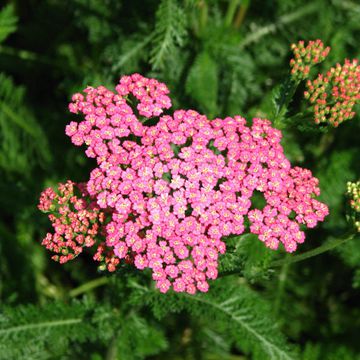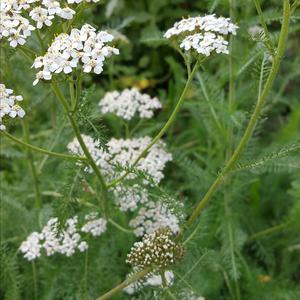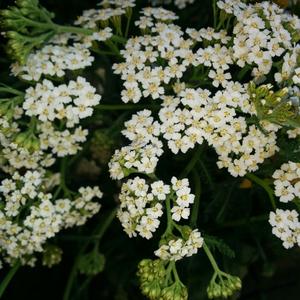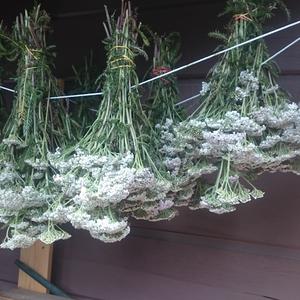Yarrow (Common)
Scientific name
: Achillea millefolium
Other names:
Azərbaycanca: Adi boymadərən
,
Български: Бял равнец
,
Bosanski: Hajdučka trava
,
Català: Milfulles
,
Česky: Řebříček obecný
,
Dansk: Almindelig Røllike
,
Deutsch: Scharfgabe (Gemeine)
,
Español: Milenrama
,
Eesti: Harilik raudrohi
,
Suomi: Siankärsämö
,
Français: Achillée millefeuille
,
Magyar: Közönséges cickafark
,
Íslenska: Vallhumall
,
Italiano: Achillea millefoglie
,
日本語: セイヨウノコギリソウ
,
Lietuviškai: Paprastoji kraujažolė
,
Latviešu: Parastais pelašķis
,
Nederlands: Duizendblad
,
Norsk (nynorsk): Ryllik
,
Norsk: Ryllik
,
Polski: Krwawnik pospolity
,
Português: Milefólio
,
Română: Coada șoricelului
,
Русский: Тысячелистник обыкновенный
,
Slovensky: Rebríček obyčajný
,
Slovenščina: Navadni rman
,
Svenska: Röllika
,
Türkçe: Civanperçemi
Short Description
The flat flower heads in both the white and yellow florets have a slightly unpleasant smell when rubbed. The Common Yarrow produces an essential oil in which different terpenes unfold (including pinene, sabinene, camphor, and bornyl). The oil causes choleretic ...
Author: Bruno P. Kremer
Discover this and other species in our Medicinal Plants 2 PRO app





